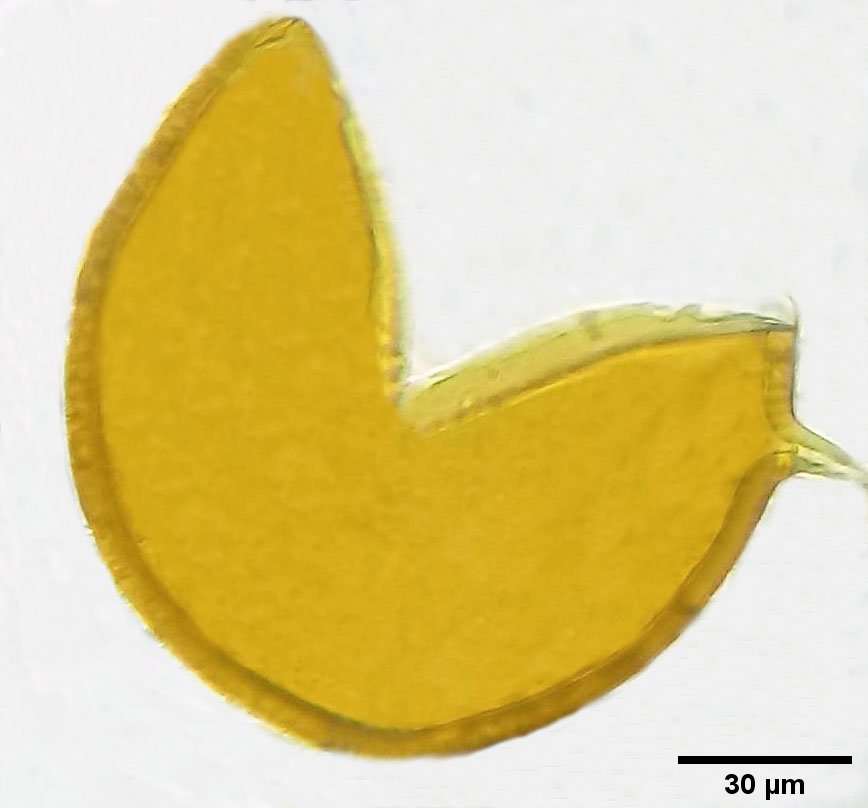- Proposed
- 2Under Assessment
- 3Preliminary Assessed
- 4Assessed
- 5Published
Claroideoglomus etunicatum (W.N. Becker & Gerd.) C. Walker & A. Schüßler
- Scientific name
- Claroideoglomus etunicatum
- Author
- (W.N. Becker & Gerd.) C. Walker & A. Schüßler
- Common names
- IUCN Specialist Group
 Unknown
Unknown- Kingdom
- Fungi
- Phylum
- Glomeromycota
- Class
- Glomeromycetes
- Order
- Glomerales
- Family
- Claroideoglomeraceae
- Assessment status
- Proposed
- Proposed by
- Lilian Araujo Rodrigues
- Comments etc.
- Lilian Araujo Rodrigues
Assessment Notes
Taxonomic notes
When seen under a microscope, spores of Claroideoglomus etunicatum may easily be confused with others spores of Glomus and Claroideoglomus, produce yellow-coloured spores of a more or less overlapping range of their size. However, Claroideoglomus has hypha funnel- to bird-bill-shaped, with and walls that are > 2.5 times wider at the spore base than some distance from the base, the wall of spores of C. etunicatum is 2-layered, that of C. claroideum consists of four layers (Błaszkowski, 2003)
Why suggested for a Global Red List Assessment?
We suggest this species to be categorized as Least Concern (LC) due to the several records worldwide.
Geographic range
Claroideoglomus etunicatum to be one of the most commonly occurring arbuscular fungi in the world.
Population and Trends
A very common species in several countries. It has 480 data according to GBIF when searching Glomus etunicatum and Claroideoglomus etunicatum.
Population Trend: Stable
Habitat and Ecology
This species occurs in different Brazilian biomes: Amazon, Atlantic Forest, Cerrado, Caatinga, Pampa and Pantanal.
Threats
It does not appear to be threatened, as it is well distributed and used in experiments with different hosts.
Conservation Actions
This species is well multiplied in controlled condition, which may help in the maintenance of this species in the future.
Research needed
Other areas should be studied.
Use and Trade
None.
Bibliography
Marinho, F., da Silva, I. R., Oehl, F., & Maia, L. C. 2018. Checklist of arbuscular mycorrhizal fungi in tropical forests. Sydowia, 70, 107-127.
Wang, F. Y., & Shi, Z. Y. 2008. Biodiversity of arbuscular mycorrhizal fungi in China: a review. Advances in Environmental Biology, 2(1), 31-39.
Cofré, M. N., Soteras, F., del Rosario Iglesias, M., Velázquez, S., Abarca, C., Risio, L., ... & Lugo, M. A. 2019. Biodiversity of Arbuscular Mycorrhizal Fungi in South America: A Review. In Mycorrhizal Fungi in South America (pp. 49-72). Springer, Cham.
obim, K., Vista, X. M., & Goto, B. T. 2018. Updates on the knowledge of Arbuscular Mycorrhizal Fungi (Glomeromycotina) in the Atlantic Forest biome–an example of very high species richness in the Brazilian landscape. Mycotaxon, 133(1), 209-209.
Country occurrence
Regional Population and Trends
| Country | Trend | Redlisted |
|---|
